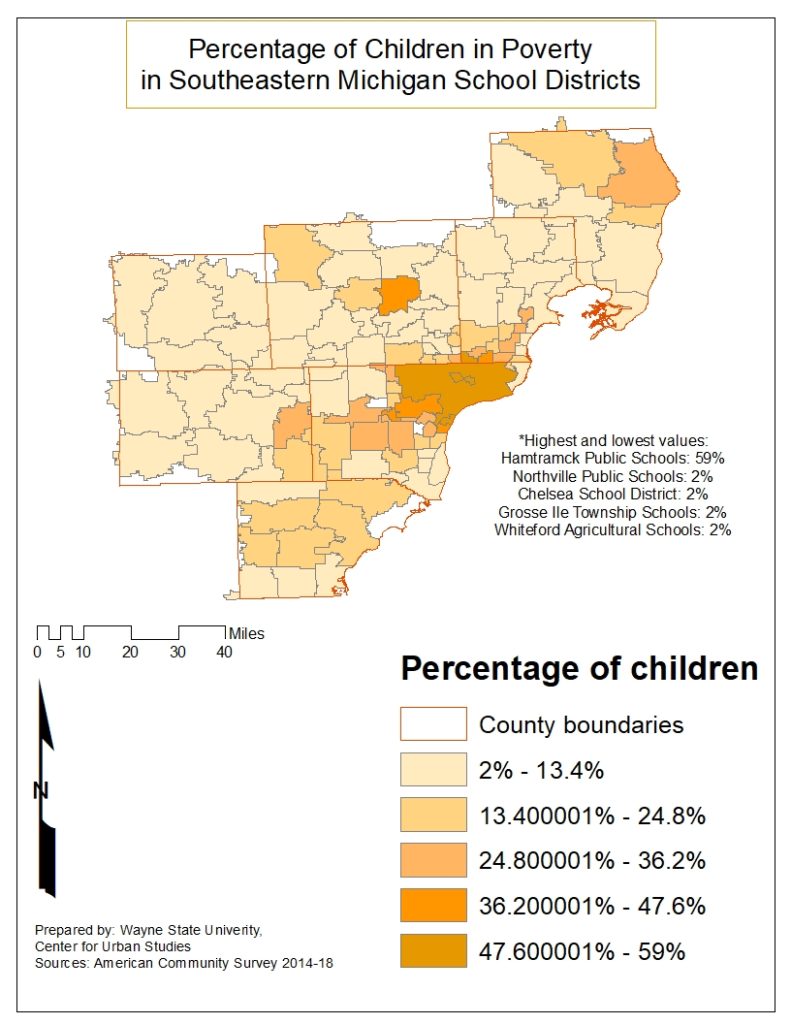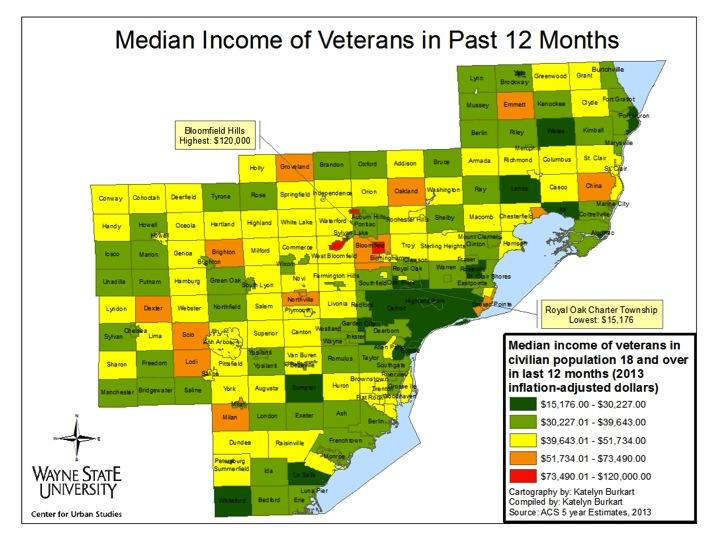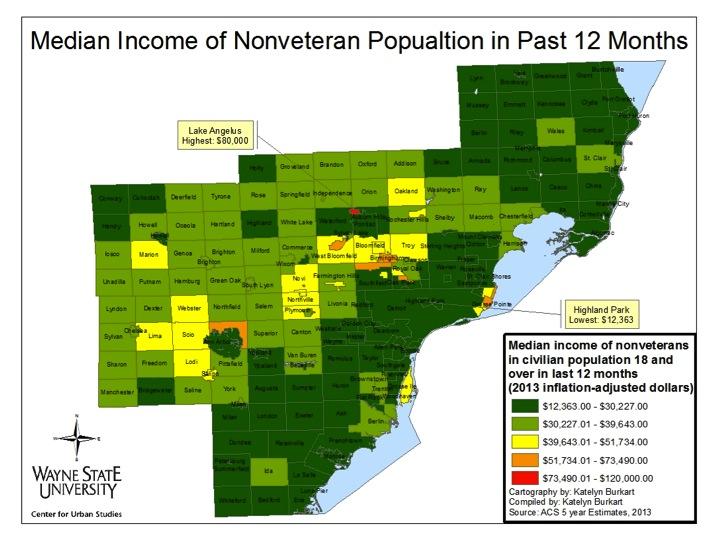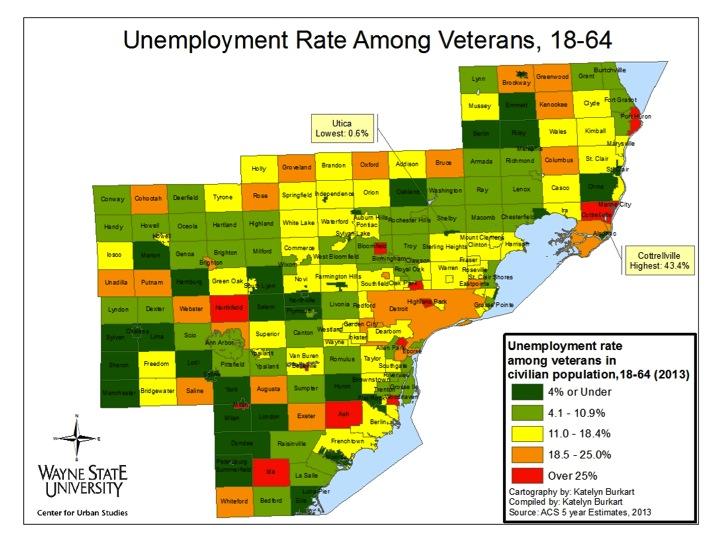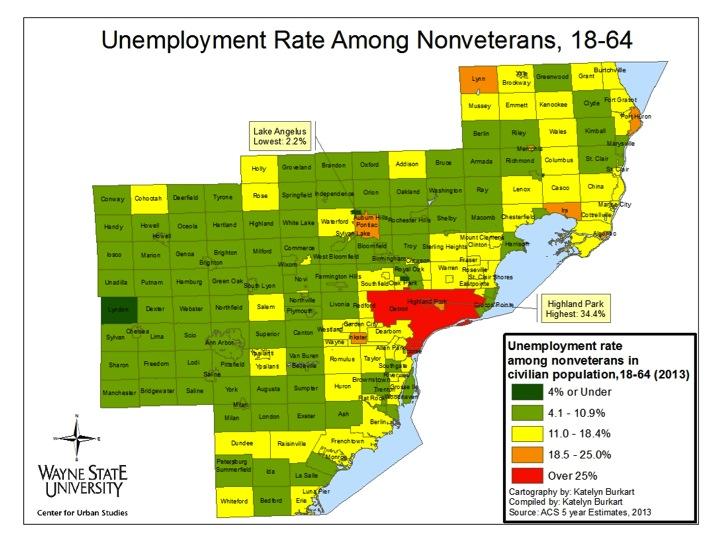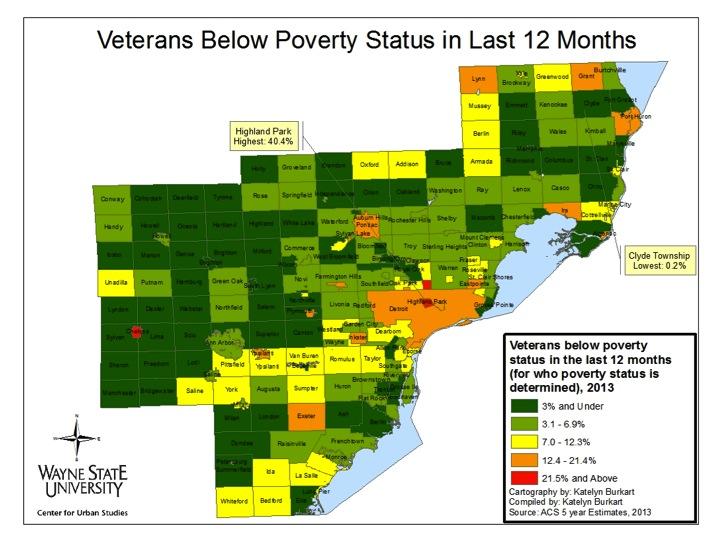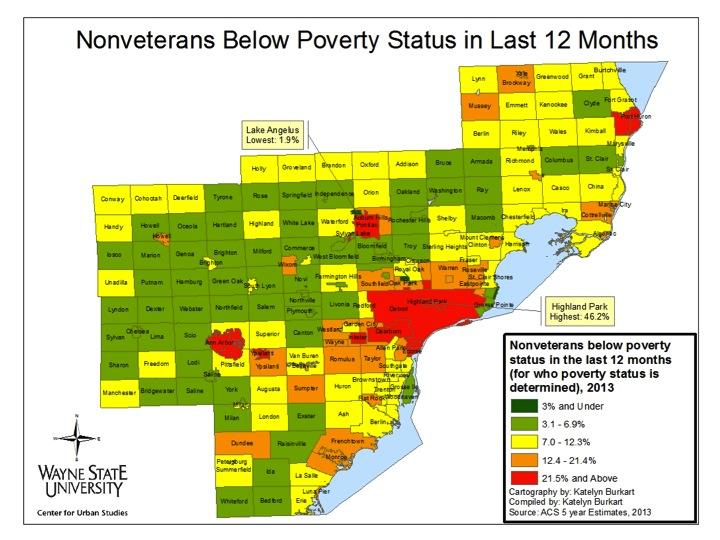The message from the maps below is clear: the percentage of children living below the poverty line in 2013 in the city of Detroit was far greater than the majority of the other communities in the seven county region. At 55.1 percent, Detroit’s poverty rate was double that of the national rate (19.9 percent) and double or more of the rates of each county within the region.
The Census Bureau, which produced this data for the American Community Survey, uses a set of money income thresholds, as set by the Office of Management and Budget, which vary by family size and composition to determine what the poverty line is. The poverty line does not vary by geographic location but is respondent to inflation. Generally speaking, according to the U.S. Census Bureau, the annual poverty rate is “calculated using the sum of family income over the year divided by the sum of poverty thresholds that can change from month to month if one’s family composition changes.”
According to the Office of Management and Budget, the weighted poverty level in 2013 for a family of four was $23,834.
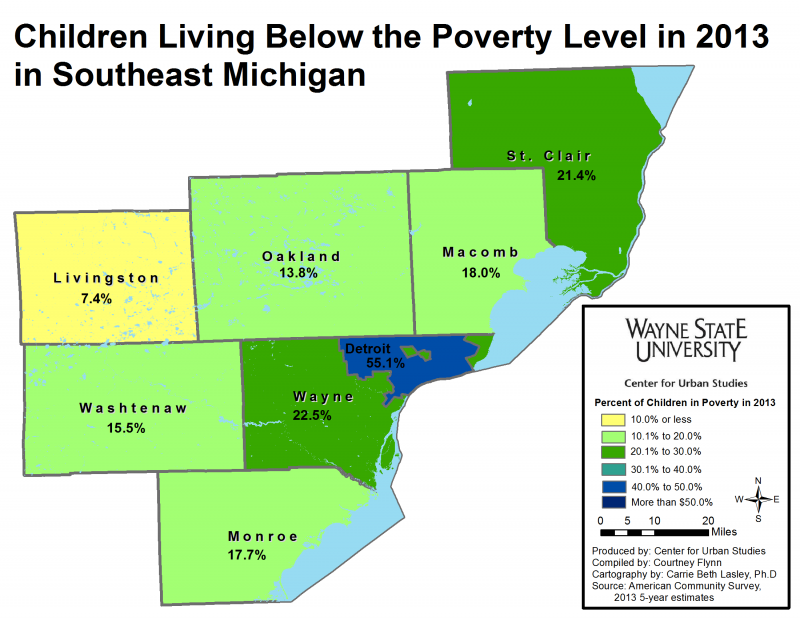
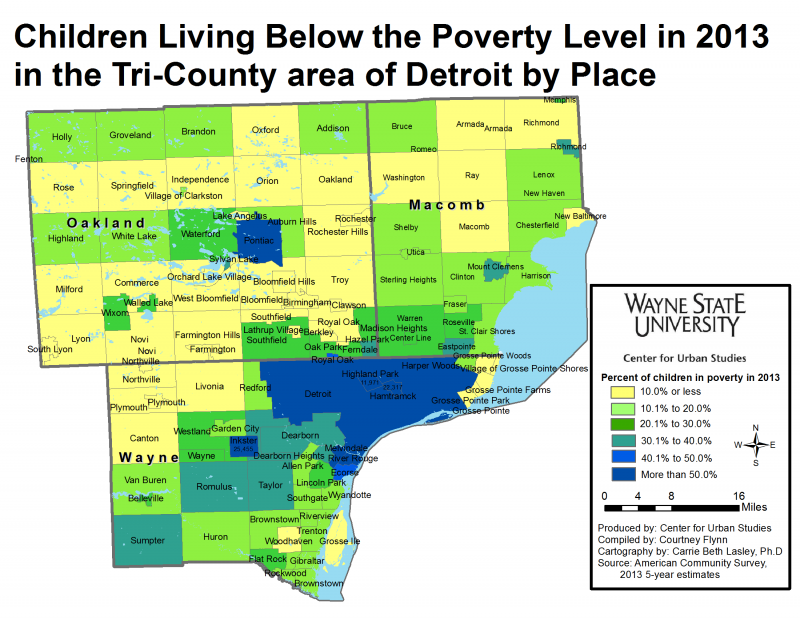
With Detroit having 55.1 percent of its children living below the poverty level in 2013, we also see that at the county level, Wayne County had the highest child poverty rate at 22.5 percent. While cities like Livonia, Canton, Plymouth and Woodhaven all had child poverty rates below 10 percent, there were some communities in Wayne County where levels were above Detroit’s. For example, Highland Park had the highest percentage of children living below the poverty line at 68 percent. Hamtramck’s percentage was also above Detroit’s at 62.1 percent, as was Inkster’s at 56.3 percent. The percentage of children living below the poverty level in River Rouge was just below Detroit at 50.1 percent.
Pontiac, which is in Oakland County, was the only other community within the region where more than 50 percent of its children were living below the poverty line. In 2013 in Pontiac, 54.3 percent of the children lived below the poverty line.
On the opposite end of the spectrum in Wayne County, there were communities such as Grosse Pointe (1%), Grosse Pointe Farms (1.8%), Grosse Ile (4.7 %), and Plymouth (5%) where 5 percent or less of the child population lived below the poverty line. In Oakland County, there were 11 communities where 5 percent or less of the children lived below the poverty line. These communities were: South Lyon (.2 percent), Royal Oak (5%), Rochester (5%), Orchard Lake (.7%), Novi (0%), Lake Angelus (0%), Huntington Woods (.3%), Bloomfield Hills (0%), Birmingham (3.1%), Berkley (4.8 percent), Sylvan Lake (0%).
Overall, Livingston County had the lowest percentage of children living below the poverty line at 7.4 percent. This was the only county where less than 10 percent of the children in a county lived below the poverty line. Oakland, Macomb, Washtenaw and Monroe counties all had less than 20 percent of their child populations living below the poverty level.
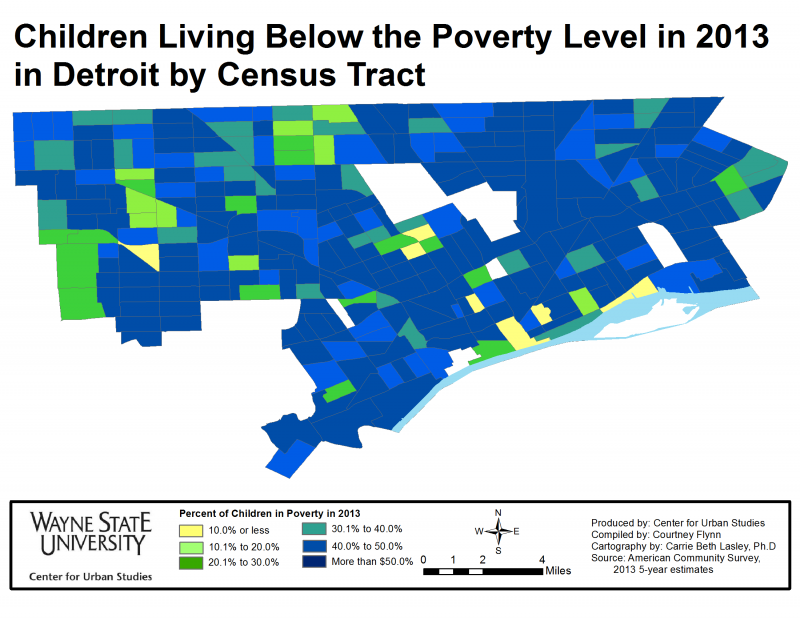
Although Detroit did not have the highest percent of children living below the poverty line in the seven county region, its rate did soar above the national and county averages. As seen in the map above, the majority of the census tracts within the city had 50 percent or more of its children living below the poverty line. Pockets of this poverty appear to be concentrated more so in the east side of the city, in Southwest Detroit, and near the Warrendale neighborhood on the west side. There were only seven census tracts within the city where 10 percent or less of the children were living below this poverty line. These areas include the downtown area, Indian Village, Arden Park, East Village, Midtown and Rosedale Park.
